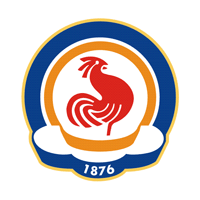


ANTIGUA and BARBUDA,Map flag

ANTIGUA and BARBUDA,Coat of arms

ANTIGUA and BARBUDA,Naval Jack Flag

ANTIGUA and BARBUDA,British Colony-Historical flag 1870-Leeward Islands

ANTIGUA and BARBUDA,Historical flag 1870-Leeward Islands
ANTIGUA and BARBUDA
GEOGRAPHY
Antigua and Barbuda is an island nation located in the eastern Caribbean Sea, on the sea's boundary with the Atlantic Ocean. There are two major islands - Antigua (IPA: /ænˈtiːgə/) and Barbuda (/bɑrˈbjuːdə/), which are close neighbors within the middle of the Leeward Islands, roughly 17 degrees north of the equator.
The islands of Antigua and Barbuda are part of the Lesser Antilles archipelago. To the south of Antigua and Barbuda lie the islands of Guadeloupe, Dominica, Martinique, Saint Lucia, Saint Vincent and the Grenadines, Barbados, Grenada and Trinidad and Tobago. Montserrat lies to the southwest; Saint Kitts and Nevis and Saint Eustatius are to the west, and Saint Barthélemy, Saint Martin and Anguilla are to the northwest.
ANTIGUA and BARBUDA
HISTORY

ANTIGUA and BARBUDA,Historical flag,West Indies Federation 1962

ANTIGUA and BARBUDA,Historical flag,1965


ANTIGUA and BARBUDA,Historical flag,Leeward Islands 1870

ANTIGUA and BARBUDA,Historical flag,Leeward Islands Royality coat of arms-1870

ANTIGUA and BARBUDA,Historical flag,Redonda Kingdom,King Leo-1872

ANTIGUA and BARBUDA,Historical flag,Redonda Kingdom,1872

ANTIGUA and BARBUDA,Historical flag,Redonda Kingdom,1872
ANTIGUA and BARBUDA
HISTORY
It would be difficult to overestimate the impact on Antigua's history of the arrival, one fateful day in 1684, of Sir Christopher Codrington. An enterprising man, Codrington had come to Antigua to find out if the island would support the sort of large-scale sugar cultivation that already flourished elsewhere in the Caribbean. His initial efforts proved to be quite successful, and over the next fifty years sugar cultivation on Antigua exploded. By the middle of the 18th century the island was dotted with more than 150 cane-processing windmills--each the focal point of a sizeable plantation. Today almost 100 of these picturesque stone towers remain, although they now serve as houses, bars, restaurants and shops. At Betty's Hope, Codrington's original sugar estate, visitors can see a fully-restored sugar mill.
Most Antiguans are of African lineage, descendants of slaves brought to the island centuries ago to labor in the sugarcane fields. However, Antigua's history of habitation extends as far back as two and a half millenia before Christ. The first settlements, dating from about 2400 B.C., were those of the Siboney (an Arawak word meaning "stone-people"), peripatetic Meso-Indians whose beautifully crafted shell and stone tools have been found at dozens of sites around the island. Long after the Siboney had moved on, Antigua was settled by the pastoral, agricultural Arawaks (35-1100 A.D.), who were then displaced by the Caribs--an aggressive people who ranged all over the Caribbean. The earliest European contact with the island was made by Christopher Columbus during his second Caribbean voyage (1493), who sighted the island in passing and named it after Santa Maria la Antigua, the miracle-working saint of Seville. European settlement, however, didn't occur for over a century, largely because of Antigua's dearth of fresh water and abundance of determined Carib resistance. Finally, in 1632, a group of Englishmen from St. Kitts established a successful settlement, and in 1684, with Codrington's arrival, the island entered the sugar era.
By the end of the eighteenth century Antigua had become an important strategic port as well as a valuable commercial colony. Known as the "gateway to the Caribbean," it was situated in a position that offered control over the major sailing routes to and from the region's rich island colonies. Most of the island's historical sites, from its many ruined fortifications to the impeccably-restored architecture of English Harbourtown, are reminders of colonial efforts to ensure its safety from invasion.
Horatio Nelson arrived in 1784 at the head of the Squadron of the Leeward Islands to develop the British naval facilities at English Harbour and to enforce stringent commercial shipping laws. The first of these two tasks resulted in construction of Nelson's Dockyard, one of Antigua's finest physical assets; the second resulted in a rather hostile attitude toward the young captain. Nelson spent almost all of his time in the cramped quarters of his ship, declaring the island to be a "vile place" and a "dreadful hole." Serving under Nelson at the time was the future King William IV, for whom the altogether more pleasant accommodation of Clarence House was built.
It was during William's reign, in 1834, that Britain abolished slavery in the empire. Alone among the British Caribbean colonies, Antigua instituted immediate full emancipation rather than a four-year 'apprenticeship,' or waiting period; today, Antigua's Carnival festivities commemorate the earliest abolition of slavery in the British Caribbean.
Emancipation actually improved the island's economy, but the sugar industry of the British islands was already beginning to wane. Until the development of tourism in the past few decades, Antiguans struggled for prosperity. The rise of a strong labour movement in the 1940s, under the leadership of V.C. Bird, provided the impetus for independence. In 1967, with Barbuda and the tiny island of Redonda as dependencies, Antigua became an associated state of the Commonwealth, and in 1981 it achieved full independent status. V.C. Bird is now deceased; his son, Lester B. Bird, was elected to succeed him as prime minister.








Hiç yorum yok:
Yorum Gönder